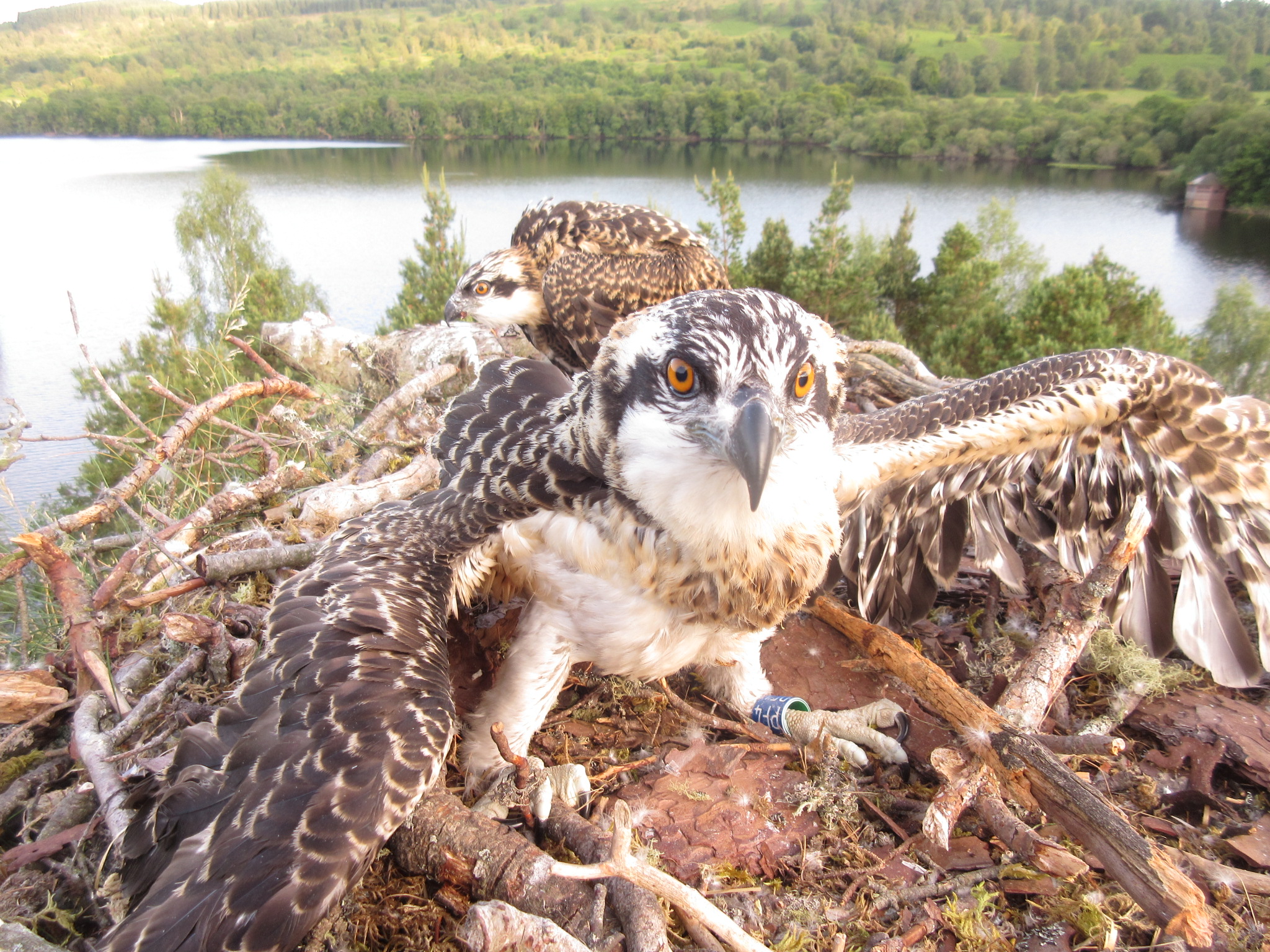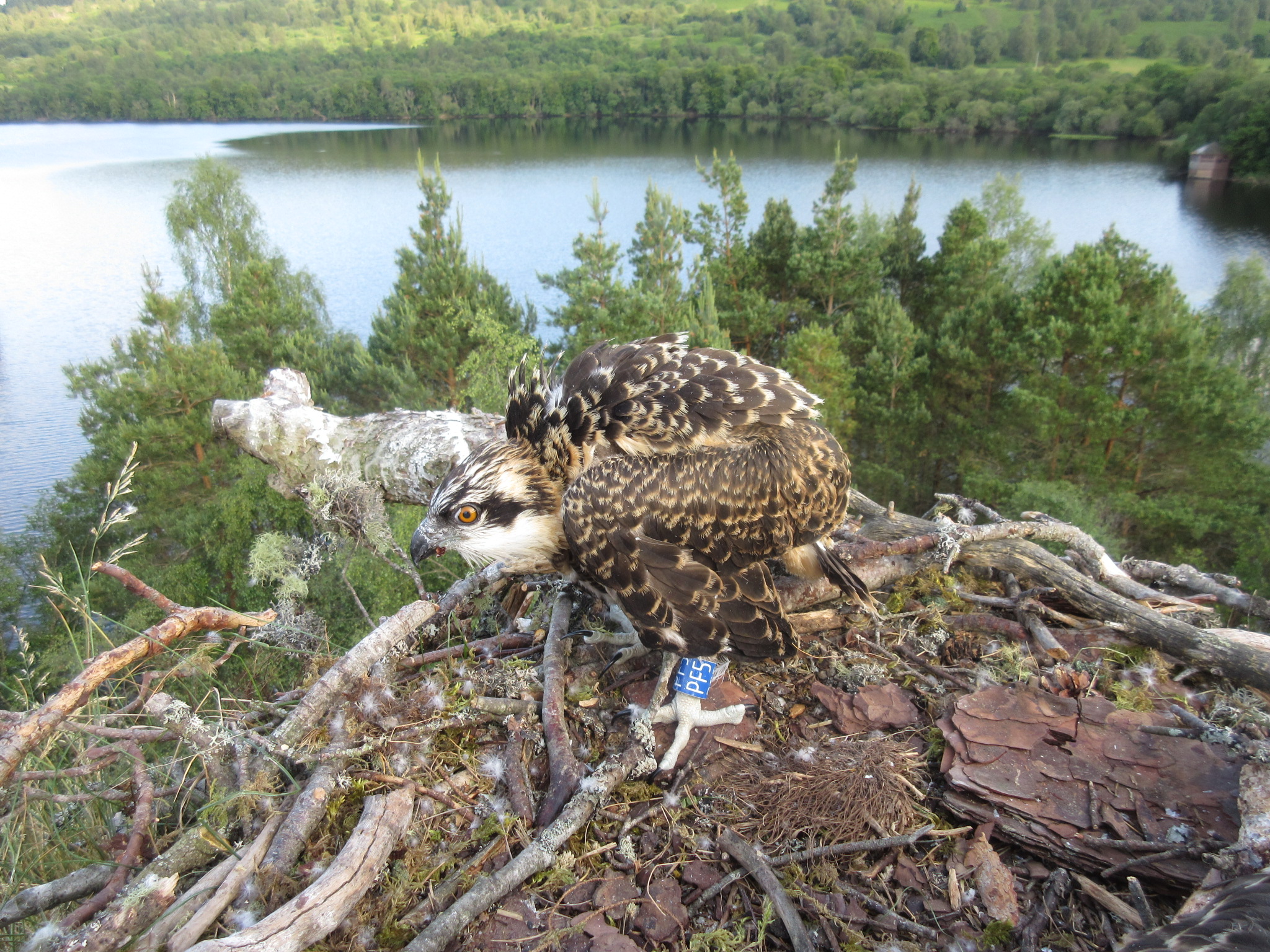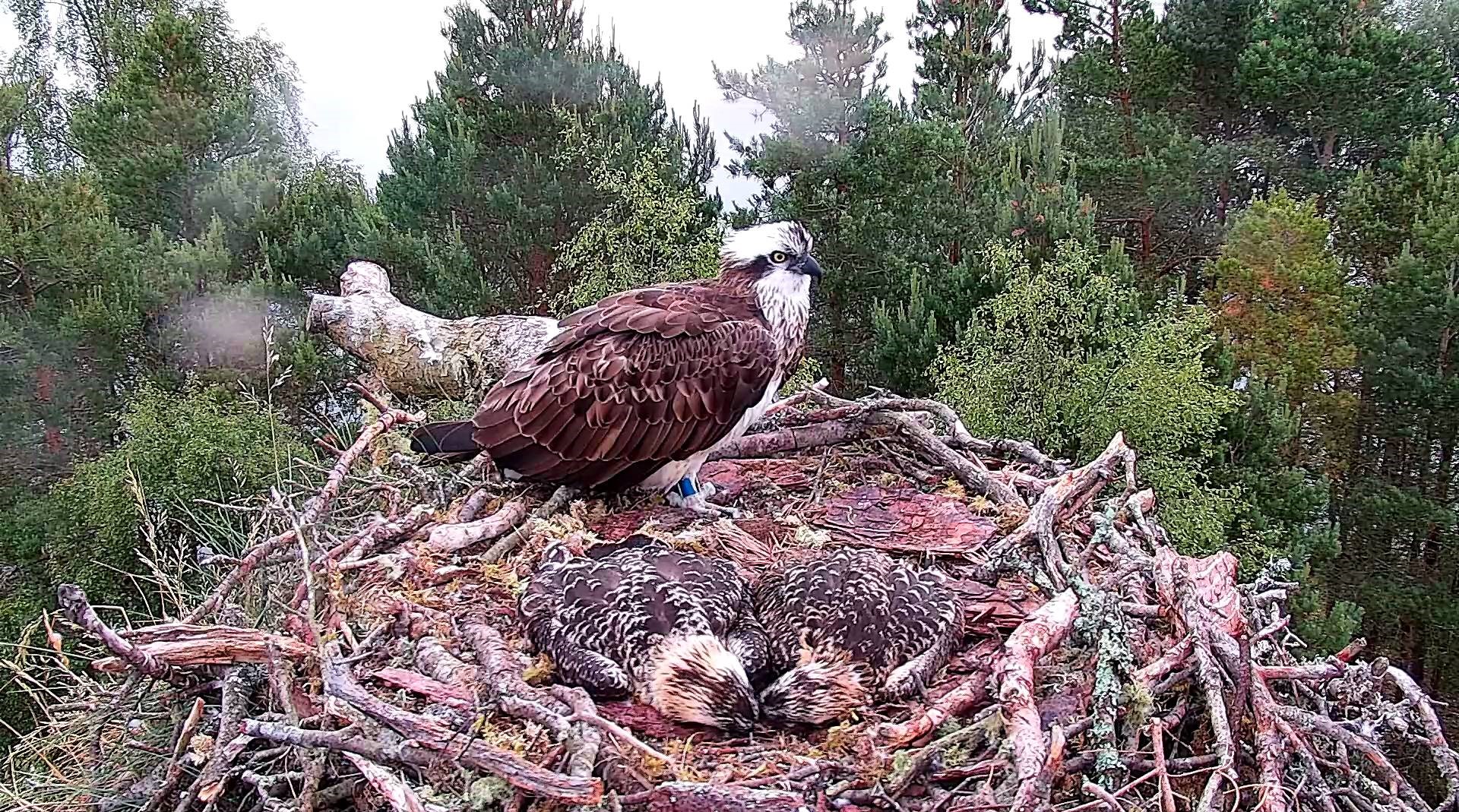Osprey Diary at Loch of the Lowes – Week 14 (The Ringing of the Chicks)
With the osprey chicks reaching the milestone of 6 and 5.5 weeks old respectively, the youngsters were the ideal developmental stage for ringing this week. Whilst their bones are almost fully formed, their wings, feathers and flying muscles still have some way to go, meaning rings can be fitted to the legs without the risk of an over enthusiastic osprey taking flight from the nest.
After a few days of wind and unsettled conditions, Thursday evening was forecast to be calm and warm. With the chicks having been fed several times earlier in the day, the opportunity was taken to undertake the ringing before LM12’s usual evening supper delivery.
Local ecologist and experienced licensed raptor ringer Chris Baker kindly took on the task of scaling the tree to undertake the ringing on the nest. The larger, older chick weighed in at 1.85kg and unsurprisingly was sexed as a female and given the colour ring ‘Blue PF4’.

Similarly, the smaller chick was of course a young male, weighing in at 1.2kg and ringed as ‘Blue PF5’. Both chicks appeared healthy, and although the young male was significantly smaller than his sister, is predicted to catch up a bit more over the coming weeks.

NC0 kept a watchful eye on the proceedings, with regular flights around the nest, whilst LM12 kept tabs on things from higher up in the air.
Each osprey received a metal BTO ring on their right leg, which allows each individual bird to be identified should their body be found, and as per all Scottish ospreys, a large Darvic colour ring was fitted their left leg. Any sightings of colour ringed ospreys can be reported to the Roy Dennis Wildlife Foundation which help to add to the database of sightings and build up an understanding of the breeding success, territory expansion, migration routes and any changes in patterns, for example wintering grounds influenced by climate change.
Unhatched Egg 1 was removed from the nest and will be sent away for analysis to find out more. We can confirm however, that what we thought was an ‘egg pip’ was indeed a bit of detritus from the nest. It can be seen on the top edge of the egg in the photo below.

Following the addition of the ospreys new rings, NC0 returned to perch on top of the camera post, and then later in the evening LM12 delivered a fine fish for an evening meal.
Life on the nest has settled back down to its usual rhythm of preening, eating, stretching and sleeping, and of course a spot of renovations, although it looks like young male PF5 wasn’t too impressed with his mother’s efforts!
After all the excitement it was heart warming to watch the youngsters couried up next to each other without any hint of sibling rivalry!
The next big step in the young ospreys lives of course will be starting to build up their flying muscles for the inevitable fledgling in a few weeks time! Don’t they grow up fast?! For now at least, NC0 continues to provide her ever steady presence, protection and care on the nest.

Make sure you stay tuned to the live webcam to follow the action and keep up to date with the daily lives of the ospreys by following us on Twitter or Facebook for regular updates.
‘Raz’ Rasmussen, Perthshire Ranger
The Trust’s Osprey Protection Programme at Loch of the Lowes is supported by players of People’s Postcode Lottery.
Help protect Scotland’s wildlife
Our work to save Scotland’s wildlife is made possible thanks to the generosity of our members and supporters.
Join today from just £3 a month to help protect the species you love.
Preface
With the osprey chicks reaching the milestone of 6 and 5.5 weeks old respectively, the youngsters were the ideal developmental stage for ringing this week. Whilst their bones are almost …
